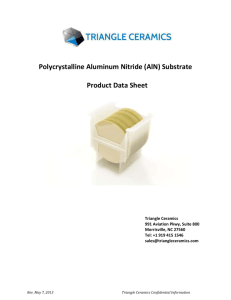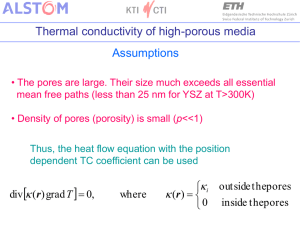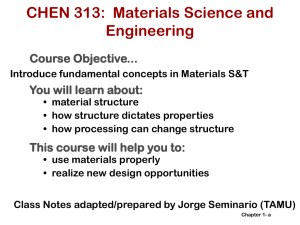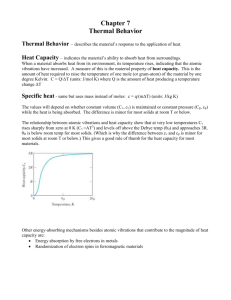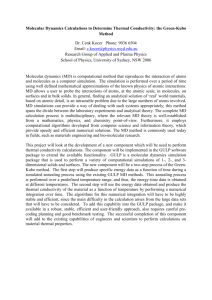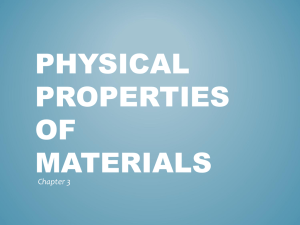Raw materials and their characterization
advertisement
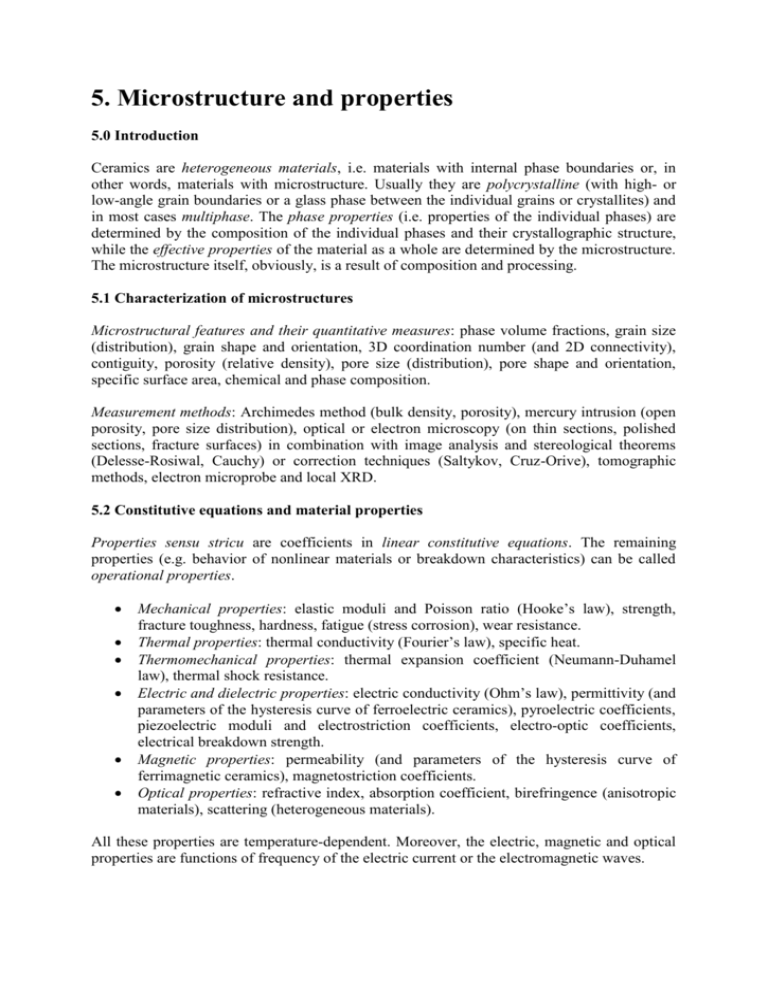
5. Microstructure and properties 5.0 Introduction Ceramics are heterogeneous materials, i.e. materials with internal phase boundaries or, in other words, materials with microstructure. Usually they are polycrystalline (with high- or low-angle grain boundaries or a glass phase between the individual grains or crystallites) and in most cases multiphase. The phase properties (i.e. properties of the individual phases) are determined by the composition of the individual phases and their crystallographic structure, while the effective properties of the material as a whole are determined by the microstructure. The microstructure itself, obviously, is a result of composition and processing. 5.1 Characterization of microstructures Microstructural features and their quantitative measures: phase volume fractions, grain size (distribution), grain shape and orientation, 3D coordination number (and 2D connectivity), contiguity, porosity (relative density), pore size (distribution), pore shape and orientation, specific surface area, chemical and phase composition. Measurement methods: Archimedes method (bulk density, porosity), mercury intrusion (open porosity, pore size distribution), optical or electron microscopy (on thin sections, polished sections, fracture surfaces) in combination with image analysis and stereological theorems (Delesse-Rosiwal, Cauchy) or correction techniques (Saltykov, Cruz-Orive), tomographic methods, electron microprobe and local XRD. 5.2 Constitutive equations and material properties Properties sensu stricu are coefficients in linear constitutive equations. The remaining properties (e.g. behavior of nonlinear materials or breakdown characteristics) can be called operational properties. Mechanical properties: elastic moduli and Poisson ratio (Hooke’s law), strength, fracture toughness, hardness, fatigue (stress corrosion), wear resistance. Thermal properties: thermal conductivity (Fourier’s law), specific heat. Thermomechanical properties: thermal expansion coefficient (Neumann-Duhamel law), thermal shock resistance. Electric and dielectric properties: electric conductivity (Ohm’s law), permittivity (and parameters of the hysteresis curve of ferroelectric ceramics), pyroelectric coefficients, piezoelectric moduli and electrostriction coefficients, electro-optic coefficients, electrical breakdown strength. Magnetic properties: permeability (and parameters of the hysteresis curve of ferrimagnetic ceramics), magnetostriction coefficients. Optical properties: refractive index, absorption coefficient, birefringence (anisotropic materials), scattering (heterogeneous materials). All these properties are temperature-dependent. Moreover, the electric, magnetic and optical properties are functions of frequency of the electric current or the electromagnetic waves. 5.3 Effective properties of heterogenous materials Effective properties are the macroscopic properties of heterogeneous (polycrystalline and / or multiphase) materials, including polycrystalline ceramics, ceramic composites and porous ceramics. Usually, effective properties depend on the material’s microstructure (except for a few exceptions which are microstructure-insensitive, e.g. specific heat), more precisely on microstructural features apart from phase composition (volume fractions). In other words, the effective properties of ceramics cannot be predicted based on the knowledge of phase volume fractions (e.g. the content of second-phase inclusions or porosity) alone, particularly in cases where the phase contrast (i.e. the difference between the phase properties) is high; in these cases prediction requires additional knowledge of the phase topology. Effective elastic moduli of statistically isotropic (quasi-isotropic) polycrystalline ceramics calculated from the elastic constants of monocrystals (i.e. components of the stiffness tensor) Voigt-Reuss-Hill average, Effective thermal conductivity, electric conductivity, permittivity, permeability and thermal expansion coefficient of statistically isotropic polycrystalline ceramics calculated from the monocrystal values (components of the corresponding secondorder tensors) one-third of the tensor trace, Effective elastic moduli, thermal conductivity, electric conductivity, permittivity and permeability of statistically isotropic multiphase polycrystalline ceramics calculated from the corresponding (volume-averaged polycrystalline) phase properties and their volume fractions Voigt-Reuss bounds, Hashin-Shtrikman-bounds, Effective thermal expansion coefficient of multiphase polycrystalline ceramics calculated from the corresponding (averaged polycrystalline) phase thermal expansion coefficients and their volume fractions Levin relation, Turner relation, Effective elastic moduli, thermal conductivity, electric conductivity, permittivity and permeability of statistically isotropic porous ceramics calculated from the corresponding solid phase properties (i.e. properties of the matrix or skeleton phase) and porosity Voigt bound, Hashin-Shtrikman upper bound, Coble-Kingery / Gibson-Ashby relation, predictive or fit relations of exponential or power-law type (Spriggs, Pabst-Gregorová, Phani-Niyogi-McLachlan). Note that the thermal expansion coefficient is independent of porosity. Complex exercise problem: Use mathematical modeling to give an explicit analytical solution for the effective thermal conductivity of an idealized porous ceramic, consisting of a periodic material with a cubic unit cell structure (considering in particular the two extreme cases of totally closed pores and a totally open skeleton and using a Voigt-Reuss approach) and compare these analytical results with numerical results obtained via numerical (finite element) modeling using the commercial software package Abaqus ®. Additional explicit questions: a.) For what other material properties (apart from thermal conductivity) are the results valid ? b.) Do the solutions provide a realistic prediction for statistically isotropic ceramics ? In particular, consider their relation to the Hashin-Shtrikman bounds.

